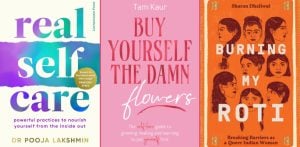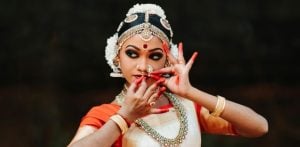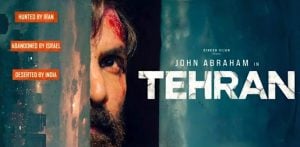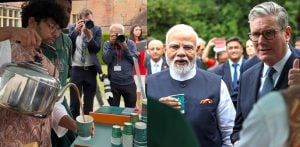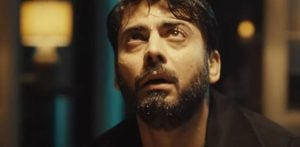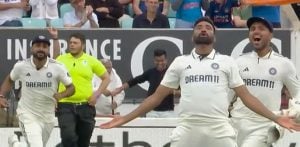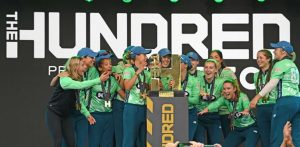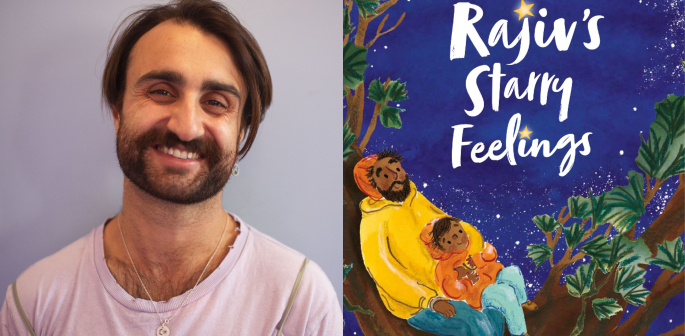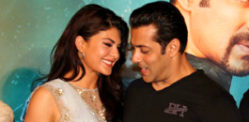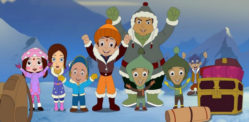"I find it scary being a trans writer for kids"
Meet Niall Moorjani, a Scottish-Indian writer and storyteller who has gifted the world with captivating narratives for both children and adults.
Their words resound with the enchantment of mythical traditions interwoven with the vibrancy of modern life.
Moorjani’s literary journey is an odyssey of wonder, exploration, and connection.
From enchanting packed theatres to engaging bewildered bus groups, they’ve bared their soul to audiences in the most unexpected places.
But it’s not only humans who have had the privilege of savouring Moorjani’s tales.
Even random passersby and loyal canine companions have been drawn into the captivating orbit of their storytelling.
As an adult storyteller, Moorjani’s resume boasts a medley of enthralling shows, often accompanied by live bands, in collaboration with the Bedtime Stories collective.
With stints at prestigious festivals like the Edinburgh Fringe as well as the 2020 Fringe of Colour Films, their performances take the audience on a ride through original narratives.
For the younger generation, Moorjani has cast a spell at renowned events like the Hay-on-Wye Festival, Bath, and Cheltenham.
The essence of their writing is poetic and lyrical, drawing inspiration from mythical and oral traditions.
In the world of nurturing creativity and imagination, Moorjani is not just a creator but a collaborator.
They are the co-founder of the Bedtime Stories collective and the founder and host of “Tales in Tooting,” a lively open-mic storytelling evening in South London.
Now, as we delve deeper into the captivating world of Niall Moorjani, it’s time to explore their latest masterpiece, Rajiv’s Starry Feelings.
The book transcends age and helps us navigate the labyrinth of our emotions.
We sat down with the artist to uncover the inspiration behind the book, his thoughts on diversity and the importance of open dialogue and emotions.
Can you share the inspiration behind ‘Rajiv’s Starry Feelings’?
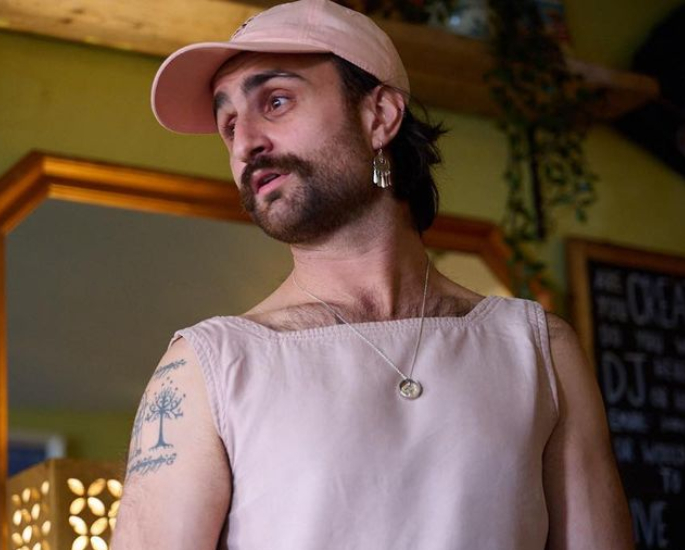
I have always been fascinated by the stars and the book was born out of a conversation with my mum (who is a trained counsellor).
I was feeling confused by my own feelings when I was about 15, and she used the metaphor of the stars being a means to map your internal feelings.
It had a big impact on me and I really resonated with it.
To me, our feelings really are like the stars, they can feel endless and beautiful, but also overwhelming, senseless and utterly out of reach.
But as you learn more about them, they make a little more sense and you start to notice the patterns within them.
Those patterns make up who we are and I don’t think there is anything much more gorgeous than that.
Years later, probably staring up at a starry sky, I became taken by the idea of making this celestial feelings concept literal.
The joy of a children’s book is you can have characters look up at the stars and actually see their feelings in them.
So I wrote it down, which is always very important to do, and that is where it came from.
In the writing and storytelling, I was also taken by the idea of writing something that depicted a really healthy and sweet relationship between a father and son in exploring these feelings.
So between those two, the storyline that unfolds came pretty easily to me.
How will the book help people understand their own emotions?
I really hope that the book might serve as a starting point in conversations about feelings.
I have worked with kids for years, particularly in children’s theatre, storytelling and facilitation.
And, I’ve been involved in shows which spark dialogues about how children are feeling but also how their parents might be feeling.
When I wrote the book I also wanted it to be something that had practical ideas.
I personally always found the idea of our feelings as constellations practically useful.
I really hope that children and even parents today may be able to use the stars as a means of expressing how they feel.
But, I also love how visual it is and that is where Nanette’s incredible illustrations are so skilful and stunning.
She brought things to life that I couldn’t have even seen clearly.
In particular, I really hope this book creates space for fathers to talk with their children about feelings and little boys are encouraged to talk about them too.
I hope the dad serves as a model for what all dads could and should be; kind, sensitive and patient and that little boys grow up knowing they deserve fathers like that.
And also grow up knowing that they should feel all of their feelings, and not just the ones society tells them are either acceptable or unacceptable.
“It was also important to me that these characters were of South Asian heritage.”
Brown people of colour (bpoc) characters are often robbed of the chance to be sensitive and emotional in literature and our society.
We all feel and deserve to do that openly and to talk about it.
I grew up with a sweet, tactile and emotional brown dad and yet hardly ever see those kinds of characters in our kids books.
So I hope that the book speaks to all, but to those groups in particular.
Why did you choose a father-son relationship as the focal point?
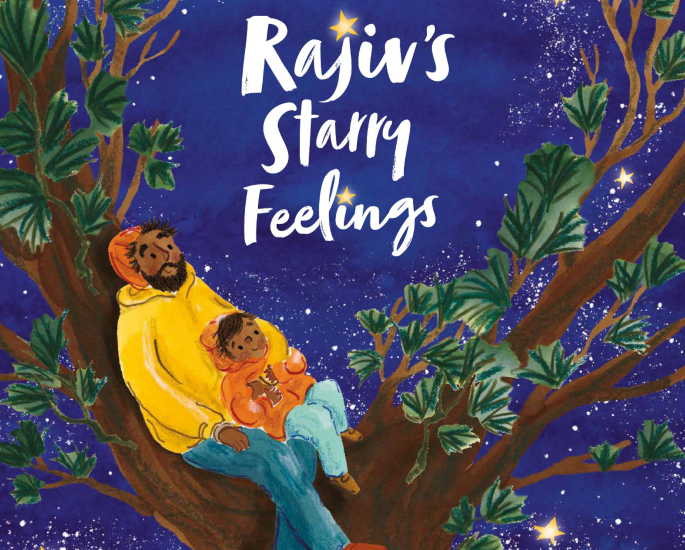
Whilst the story was inspired in many ways by my incredible mum, it made a lot of sense to tell the story through a father and son.
I have to credit my editor Katrina for guiding me that way and as soon as she asked if I would be open to it, it was a no brainer.
To expand on my earlier point, men and boys are often made to feel like they cannot show their emotions, or the only emotion they are allowed to show is anger.
Sadly we can see this in the rates of suicide amongst men in our society.
They are far less likely to seek help when mentally unwell and I think so much of this is routed in the way young boys are conditioned as they grow up.
Mindsets like “big boys don’t cry” were ubiquitous in my childhood and still are in many parts of our society.
Or boys grow up with dads who never share their feelings with them.
One of the key messages I wanted to convey through Rajiv and his dad’s relationship was to show that dads can and should be sensitive.
They should be aware of their feelings and provide support to their children as they learn about them.
For me, this also challenges the sexist and flawed notion that the realm of emotions is for women and mothers to deal with and that women are irrational for being “emotional”.
We all are, everyone just expresses those emotions differently and everyone should feel safe and supported to talk about how they have been feeling.
How do you believe stories like this can aid a child’s development?
As I have said I have worked with children, particularly this age group for years.
I have seen the way that stories impact them, especially at such a young age.
Often things like feelings are too abstract to properly understand if you talk about them in the same way you would for adults.
However, I think even adults often struggle with how abstract our feelings are.
“But if you give children something tangible and practical to talk about, often they can.”
I have seen how stories can help children grasp concepts they were struggling with or really help them take shape.
For example, I once did a show with Discover’s Children’s Storytelling Centre in collaboration with the artist Merlin Evans who led the project.
We used animals to help bring different kinds of feelings to life and in the show, there was lots of clowning and puppets.
But at its core, there was a real attempt to capture these feelings and it was amazing to see how the kids interacted after the show.
We could hear them talking with their grown-ups about how they had been feeling like an angry snake that day, or an anxious bat or a joyous mouse.
Suddenly they had something tangible to help them express where they were emotionally.
We also took the project in schools just after Covid and honestly, the responses of the kids were so open and insightful.
I am just so convinced of the power of stories and storytelling to help children.
Could you share your views on diverse representation in children’s literature?
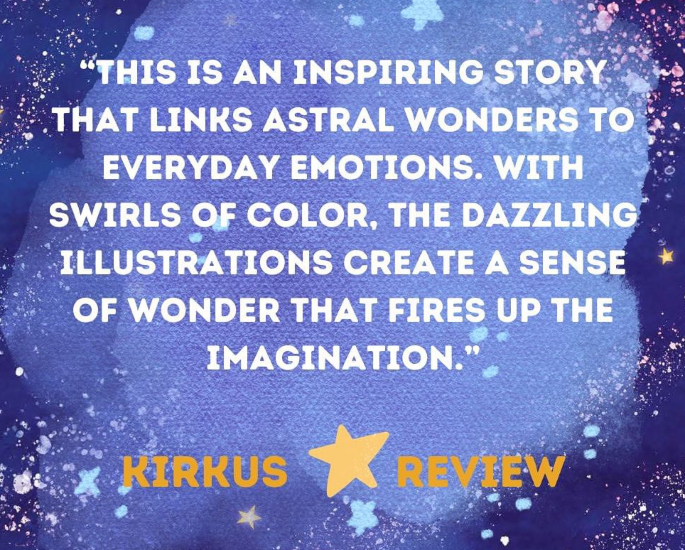
I am a huge believer in the notion that if you can’t see something, it is very hard to become it.
Growing up in Dundee (Scotland), a very white and normative part of the world, I almost never read books in which I saw myself.
I still don’t read too many, to be honest, and it is my job as a kid’s performer and writer to read a lot of kids’ books.
The industry is still desperately behind in representing the glorious, rich and diverse world we live in.
This has to change as soon as possible.
There are so many reasons for this but at a core it reinforces the idea that people not only exist but they belong.
If kids and parents grow up reading about black and brown kids or queer characters, they may not just see themselves but also might grow up seeing our diverse world as a normal thing.
Reading is also such a gateway to empathy, to hear the stories of others who aren’t but also are just like us.
I think I am a more empathetic person because I grew up mixed-race and am non-binary today.
In many ways I am so privileged but, I have been on the receiving end of some horrible stuff that I would never like anyone else to face.
I think difference and diversity are beautiful (being both different and by many metrics a minority I am biased).
One of the ways of reinforcing this is to write diversely and represent the world we see.
I like to think being who I am makes my work kinder and richer than it would have been were I not queer and brown.
Have you faced any challenges as a non-binary British Asian writer?
I think the core one is shared by so many other bpoc and queer artists.
It is just brutally hard to get into.
You are so aware that you are part of a minority within the publishing community (which is even more exaggerated than the UK generally).
You know that you are going to be overlooked for white or normative authors.
Or if you are picked up, there is a good chance the publisher will only be interested in work which is focused on your identities.
For instance, it is harder for a bpoc author to publish stories where race doesn’t really matter.
Every meeting you go into, chances are, you will be the only person of colour in the room.
Often editors/ professionals in the industry talk about things that are highly sensitive as if they are either unimportant or commodities to be sold.
“I have never faced backlash from my own community, but I am terrified of it.”
I find it scary being a trans writer for kids in the modern world we live in.
I worry someone from my own community or communities will tell me I have got something about our community wrong or that I haven’t done enough for us in my work.
But ultimately, I am never really trying to represent whole communities.
It isn’t possible as no community thinks the same.
I am trying to write things I wish a younger version of me had growing up and be true to the beautifully diverse world around me.
As long as I do that I can know I can let other people keep their problems or if they have a valid point make sure I learn with it.
Could you describe your collaboration with Nanette Regan?
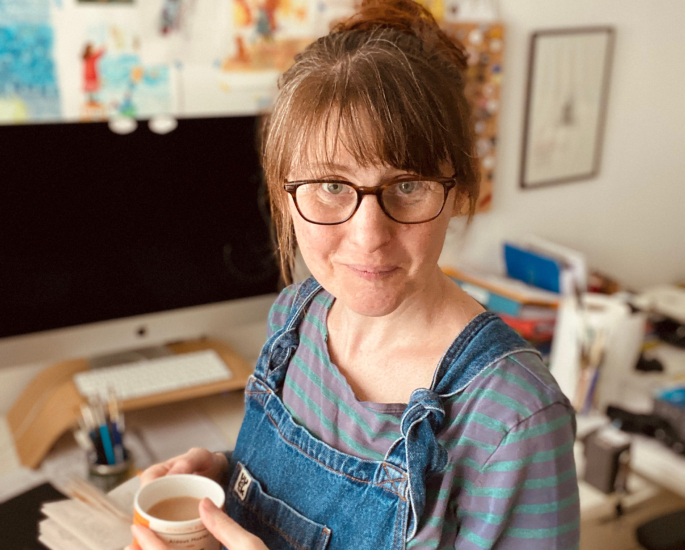
Nannette’s work is just stunning. It was a pleasure to work with her.
With this being my debut I have never had the pleasure of seeing my work brought to life like this.
I can’t really get over how special the illustrations are. I feel so lucky.
Like when I wrote the story I could really see it, but I can’t draw for toffee and thought it might be quite hard for an artist to capture well.
Nanette not only managed to put my imagination onto paper but made it so much more beautiful than I could have ever imagined.
I have obviously spent ages here talking about me and the story, but it really would be nothing without the illustrations.
I also adore how she has captured Rajiv’s relationship with his dad.
It is so soft, tender and warm and just fills my heart with joy.
Many children will only engage with the pictures and I think she has done such a spectacular job that that really isn’t a problem.
I often work in my performances with musicians and honestly I feel like Nanette has put music on a page with her imagery.
She was also so wonderful and sensitive to the fact I wanted the family to be clearly South Asian.
We had some fun back and forth on how to do this and I think she has done an exceptional job.
Basically, anyone would be lucky to work with her and I am just over the moon it was me.
How do folk tales inspire your modern storytelling?
So I wouldn’t say this is an old story with a modern twist.
It isn’t a fairy tale like much of my other work, it is a much more contemporary and true-to-life piece than I often write.
However, something I adore about folk and fairy tales is magic.
“I love how something can just be and doesn’t need too much explaining.”
I think that translates very well into kids’ storytelling and writing.
In this book when Rajiv and his dad can just see their feelings in the stars it isn’t weird or strange, it just happens and is wonderful.
I think there is such magic in that.
Fairy tales so often do that for us.
They seem silly or fantastical but are rooted in deep truths. So I think that is where they are present in this book.
Can you elaborate on the significance of Lantana Publishing?
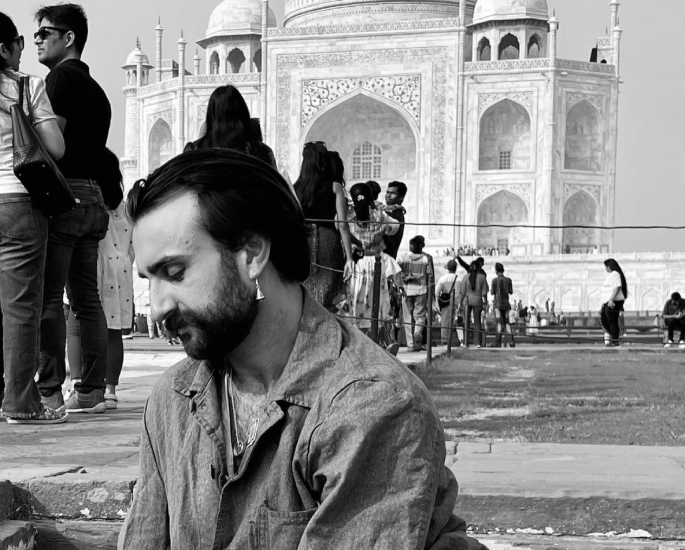
On Lantana specifically I really think they are a wonderful organisation.
As a queer, bpoc artist, who is also neurodiverse, I felt so held by them in all facets of who I am.
Wanting to represent my world in the book was something they were immensely passionate about and I am just so glad they exist as a publisher.
Niall Moorjani’s artistic journey is a testament to the power of storytelling to transcend barriers and ignite the flames of imagination.
Their writing, poetic and lyrical, draws from the depths of mythical and oral traditions, weaving a tapestry that is as rich as it is modern.
Yet, it’s their latest creation, Rajiv’s Starry Feelings, that truly shines, helping us all explore the complex emotions we grapple with but often find challenging to name.
In a world that yearns for stories that touch the soul and illuminate the heart, Niall Moorjani’s work offers a beacon of light and more importantly, shines a spotlight on how diverse our world is.
Grab your own copy of Rajiv’s Starry Feelings here.



